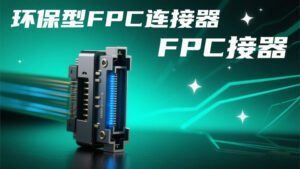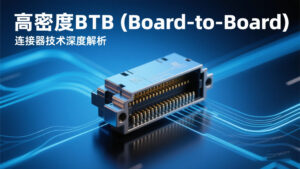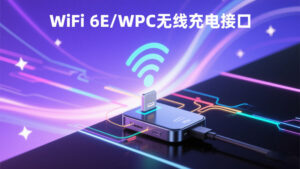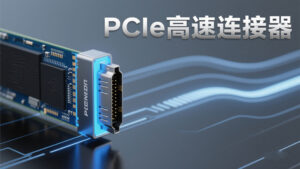Driven by global carbon neutrality targets and increasingly stringent environmental regulations, the electronics manufacturing industry is undergoing a profound green transformation. As an indispensable interconnection component in electronic devices, the environmental upgrade of flexible printed circuit (FPC) connectors has become the focus of the industry. Recently, a number of leading companies have launched FPC connector solutions in line with international environmental standards, not only to meet the EU RoHS 3.0, REACH and other regulatory requirements, but also the sustainable development of the electronics industry to provide a key technical support.
1. Technological breakthroughs in environmentally friendly FPC connectors
1.1 Innovative applications of halogen-free materials
Traditional FPC connectors are widely used halogen-containing flame retardants, which are effective in fire protection but release toxic substances. The latest research and development of environmentally friendly FPC connectors using phosphorus, nitrogen and other halogen-free flame retardant materials, to maintain UL94 V-0 level flame retardant performance at the same time, completely avoiding the generation of dioxins and other harmful substances. For example, a Japanese materials giant developed bio-based polyimide film, not only excellent flame retardancy, but also reduce the carbon footprint of 30%.
1.2 Lead-free manufacturing process innovation
In terms of soldering process, the environmentally friendly FPC connectors fully adopt lead-free plating technology. By optimizing the tin-silver-copper (SAC) alloy formula, the new connector in the 260 ℃ high-temperature reflow soldering process can still maintain stable mechanical and electrical properties. A major Taiwanese connector factory test data show that its lead-free FPC connector at 85 ℃ / 85%RH environment can still ensure that more than 1,000 hours of reliable working life.
1.3 Recyclable design concepts on the ground
Breakthrough modular design of FPC connectors for the first time to achieve large-scale recycling. A German company introduced the "easy to disassemble" structure, through the standardization of interface design, so that the copper foil, substrate and cover film can be quickly separated and recycled, the material reuse rate of 90% or more. Supporting the development of chemical recovery technology, more efficient extraction of gold, copper and other precious metals from waste FPC.
2. Industry applications and market response
2.1 Rapid adoption by leading consumer electronics companies
Apple's latest smartwatch product line, the full use of environmentally friendly FPC connectors, is expected to reduce the use of about 15 tons of hazardous substances per year. Samsung Electronics requires all first-tier suppliers to complete the environmental protection FPC switch before 2025, this alone will drive the global 30% FPC capacity transformation.
2.2 Mandatory requirements for automotive electronics
The latest EU Restricted Substances in Vehicles Directive includes FPC connectors in its regulatory scope. BMW, Volkswagen and other car companies have begun to use environmentally friendly FPC in new models, in which the use of electric vehicle battery management system (BMS) has grown most significantly. Industry forecasts show that in 2026, the market size of automotive environmental FPC will exceed 800 million U.S. dollars.
2.3 Compliance upgrades for medical equipment
In the medical field, environmentally friendly FPC connectors not only meet the ISO 10993 biocompatibility standards, but their sterilization adaptability has also been significantly improved. Tests by an international medical device manufacturer have shown that the performance decay rate of the new environmentally friendly FPC in the ethylene oxide (EO) sterilization cycle is 60% lower than that of traditional products.
3. Industrial chain synergy development
3.1 Transformation of material suppliers
Major global substrate suppliers such as DuPont and Taihong have established specialized production lines for environmentally friendly materials. Among them, the successful development of water-based polyimide precursors has reduced organic solvent emissions from the FPC manufacturing process by more than 80%.
3.2 Green transformation of manufacturing equipment
Laser drilling, plasma treatment and other dry processes gradually replace the traditional chemical etching, so that the FPC production of wastewater emissions decreased by 95%. ASYS, Aobao Technology and other equipment vendors launched a new generation of production lines, energy consumption than the traditional equipment to reduce 40%.
3.3 Perfect testing and certification system
UL, TUV and other organizations have developed special certification for environmentally friendly FPC, covering the whole life cycle assessment from raw materials to finished products. The Green FPC Industry Standard recently released by the China National Institute for Standardization of Electronics Technology (CNISET) has filled the gap of domestic standards in this field.
4. Future prospects and challenges
4.1 Cost optimization remains key
The current price of environmentally friendly FPC connectors is still 15-20% higher than traditional products. the industry needs to achieve cost parity in the next 3-5 years through large-scale production and process improvement. A consulting organization predicted that when the global capacity share of 30%, the price gap can be narrowed to within 5%.
4.2 Emerging Market Nurturing
India, Southeast Asia and other emerging electronics manufacturing base of environmental awareness is relatively weak, the need to strengthen the construction of regulations and industry guidance. International Electronics Industry Connection (IPC) has launched a special training program to help enterprises in these regions to understand the value of environmental protection FPC.
4.3 Next Generation Technology Reserve
Graphene-based FPCs, degradable connectors and other cutting-edge technologies are making breakthroughs at the laboratory stage. The cellulose nanofiber-based FPC developed by a research team can achieve natural degradation within 6 months while maintaining electrical performance, representing the future direction of development.




